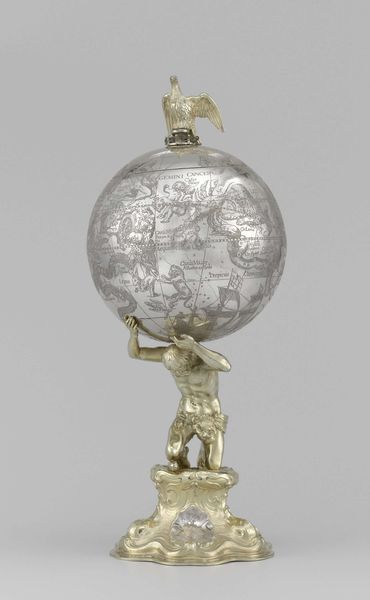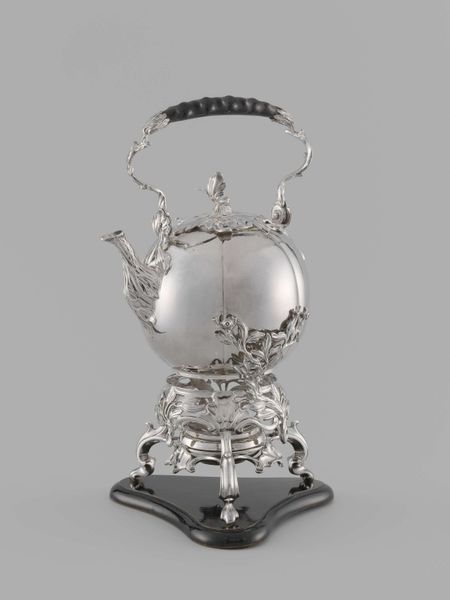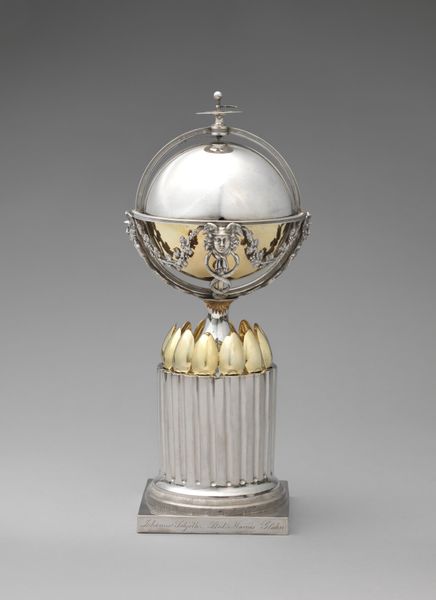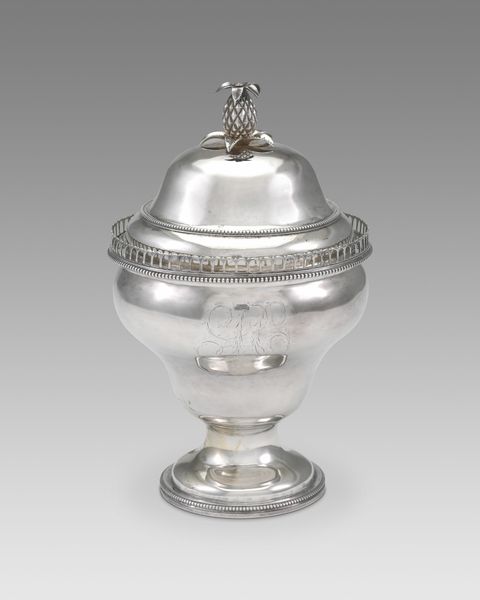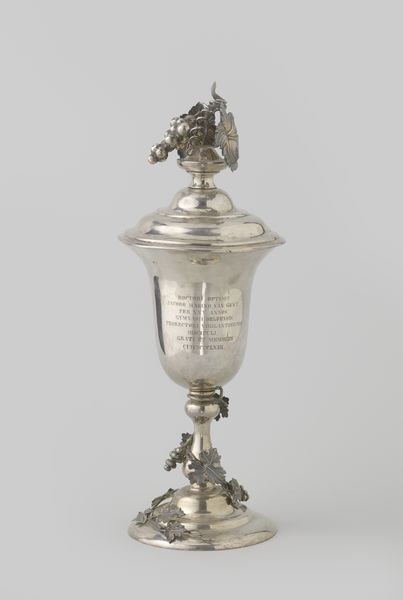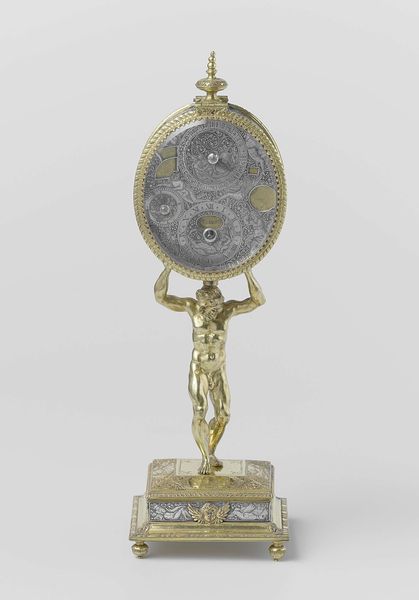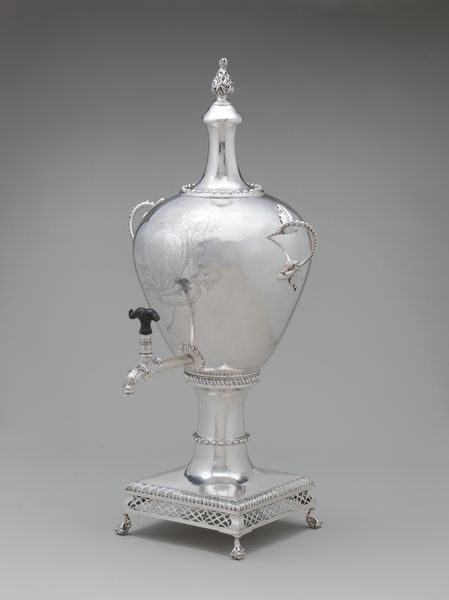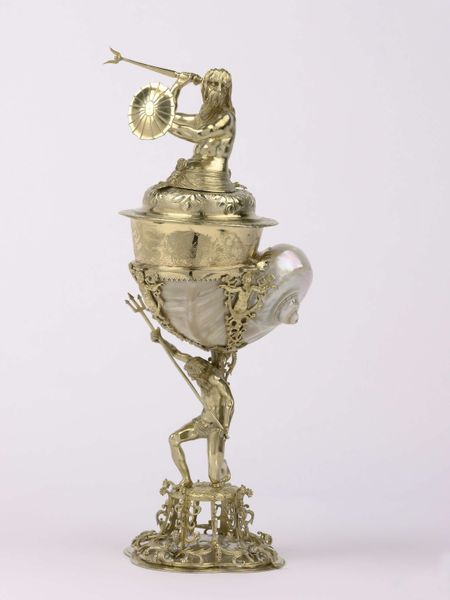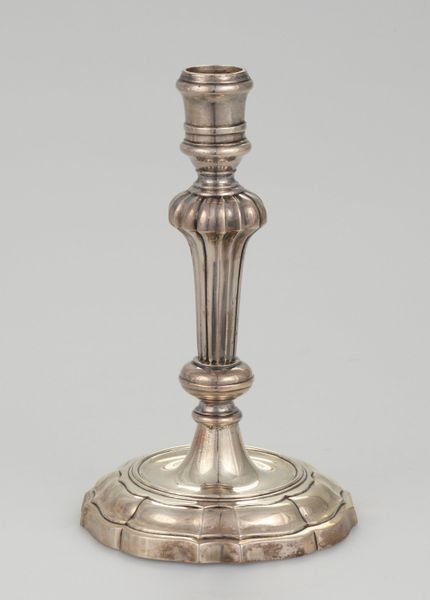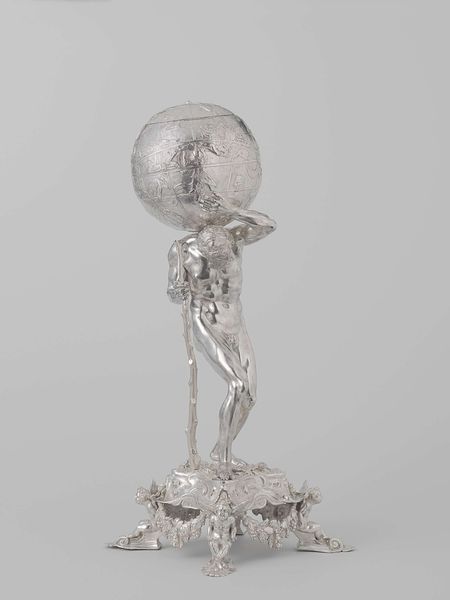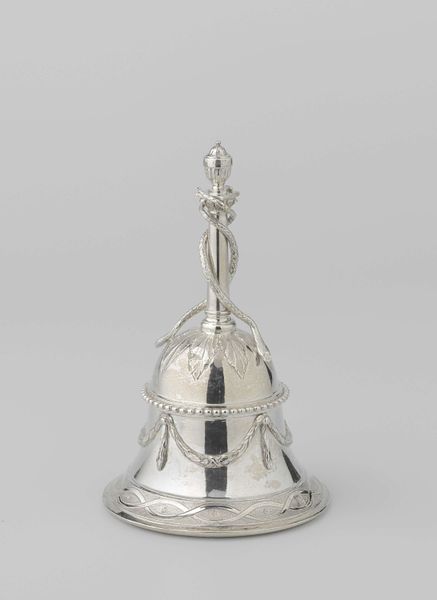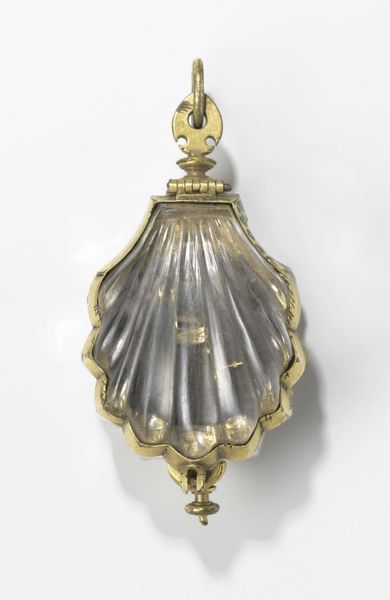
silver, metal, sculpture
#
silver
#
allegory
#
baroque
#
metal
#
figuration
#
sculpture
#
miniature
Dimensions: height 25.5 cm, diameter 10.9 cm
Copyright: Rijks Museum: Open Domain
Editor: Here we have Christoph Ritter's silver "Globe Cup," made around 1640. It's surprisingly small but detailed, with a figure supporting a globe topped by a bird. The weight of the world, quite literally, resting on someone's shoulders! What can you tell me about it? Curator: From a materialist perspective, this cup offers much to unpack. Consider the silver itself. Where did it come from? Who mined it? The craftsmanship suggests skilled labor, probably a workshop setting. Was this a commissioned piece, implying a wealthy patron? Editor: So, it's not just about the artistic design but also the whole process behind it? Curator: Precisely. The globe, depicting the world as known then, speaks volumes about European exploration and colonization, the silver perhaps originating in the very lands being mapped. The Atlas figure symbolizes not only burden but also power structures inherent in global trade. And what about the allegorical message coupled with its function as a cup for drinking? Does that consumption change how the viewer, and drinker, understands power? Editor: I see what you mean. The very act of using the cup connects the user to the systems of labor and exploitation behind it. Almost like a ritual. Curator: Exactly. It blurs the lines between art object and commodity. The cup becomes a material manifestation of global interconnectedness and inequality, a potent symbol when considering the social context of its creation and consumption. Editor: I hadn’t thought about it that way before! I was stuck on the allegorical figure of Atlas. But thinking about the material and labor involved gives the object an entirely different weight, pun intended! Curator: Thinking through the material allows for us to see it for what it truly is. This forces one to analyze what may have been excluded from common assumptions about Baroque Art in order to gain a better view of the work in front of us.
Comments
rijksmuseum about 2 years ago
⋮
A kneeling Julius Caesar carries a terrestrial globe on his right shoulder. He is here represented as the founder of the Roman Empire. The names of the other great empires of antiquity – Assyria, Persia and Greece – are inscribed in escutcheons on the cup’s base. To drink from the cup, the top section of the terrestrial globe is removed.
Join the conversation
Join millions of artists and users on Artera today and experience the ultimate creative platform.
